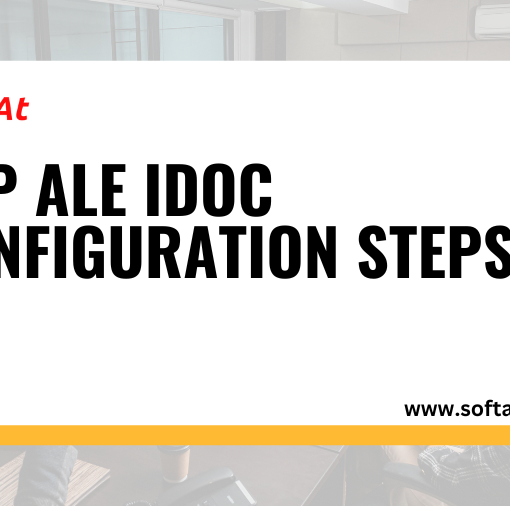In the fast-paced world of supply chain management, businesses are continually seeking solutions to optimize their processes and enhance efficiency. SAP SNP (Supply Network Planning) emerges as a powerful tool to meet these demands. This article will explore the intricacies of SAP SNP, its key features, advantages, implementation best practices, real-world applications, challenges, and the future outlook of this vital supply chain planning tool.
Understanding SAP SNP
What is SAP SNP?
SAP SNP, or Supply Network Planning, is a module within the SAP Advanced Planning and Optimization (APO) suite. It focuses on planning and optimizing the supply chain by considering factors such as demand, inventory, and production capacities. In essence, it enables businesses to align their supply chain processes with market demand effectively.
Importance of Supply Network Planning
In a globalized and interconnected business landscape, the importance of efficient supply chain planning cannot be overstated. SAP SNP plays a crucial role in ensuring that businesses can respond promptly to changes in demand, optimize inventory levels, and streamline production planning.
Key Features of SAP SNP
Demand Planning and Forecasting
SAP SNP incorporates robust demand planning and forecasting capabilities. By analyzing historical data and market trends, businesses can make informed decisions about future demand, ensuring that the supply chain is aligned with customer needs.
Inventory Optimization
Efficient inventory management is a cornerstone of effective supply chain planning. SAP SNP allows businesses to optimize their inventory levels, minimizing carrying costs while ensuring product availability.
Production Planning
Aligning production with demand is a complex task. SAP SNP simplifies production planning by considering factors such as available resources, production capacities, and demand fluctuations.
Advantages of Implementing SAP SNP
Improved Demand Visibility
SAP SNP provides businesses with enhanced visibility into demand patterns. This visibility enables proactive decision-making, reducing the risk of stockouts or overstock situations.
Enhanced Inventory Management
By optimizing inventory levels, businesses can reduce holding costs and improve cash flow. SAP SNP’s inventory optimization features contribute to efficient supply chain operations.
Efficient Production Planning
Aligning production with demand ensures that resources are utilized optimally. SAP SNP’s production planning capabilities contribute to efficient and responsive manufacturing processes.
SAP SNP Implementation Best Practices
Data Accuracy and Integration
Ensuring the accuracy of data inputs is crucial for the effectiveness of SAP SNP. Integrating data from various sources, including sales, production, and logistics, contributes to a more comprehensive and accurate planning process.
Collaboration Across the Supply Chain
Effective supply chain planning requires collaboration with suppliers, distributors, and other stakeholders. SAP SNP facilitates collaboration by providing a centralized platform for communication and information exchange.
Continuous Monitoring and Optimization
Supply chain dynamics are ever-changing. Continuous monitoring and optimization of the planning processes ensure that businesses can adapt to new market conditions and challenges effectively.
Real-world Applications and Success Stories
Case Study 1: Streamlining Global Supply Chains
A multinational corporation implemented SAP SNP, resulting in a 15% reduction in lead times and a 20% improvement in on-time deliveries. The platform’s ability to synchronize supply and demand across diverse markets contributed to this success.
Case Study 2: Reducing Stockouts and Overstock Situations
A retail giant utilized SAP SNP to optimize inventory levels, leading to a 25% reduction in stockouts and a 30% decrease in excess inventory. This contributed to significant cost savings and improved customer satisfaction.
Challenges in SAP SNP Implementation
Data Quality and Consistency
Challenges related to data quality and consistency can impact the accuracy of planning outcomes. Businesses need to invest in data management practices to address this challenge.
Resistance to Change
Implementing a new supply chain planning tool often faces resistance from employees. Change management strategies and effective communication are crucial to overcoming this challenge.
Complexities in Global Supply Chains
For businesses with complex global supply chains, navigating the intricacies of different markets, regulations, and logistics can be challenging. SNP implementation requires careful consideration of these complexities.
Overcoming Challenges: Tips for a Successful SAP SNP Implementation
Comprehensive Training Programs
Ensuring that employees are well-trained on the use of SNP contributes to smoother implementation. Training programs should cover both technical aspects and the strategic importance of the tool.
Stakeholder Communication and Involvement
Effective communication with stakeholders, including employees, suppliers, and distributors, is essential. Involving stakeholders in the planning processes creates a sense of ownership and commitment.
Continuous Improvement and Adaptation
SNP implementation is not a one-time task but an ongoing process. Businesses should continuously assess and improve their planning processes, adapting to changes in the market and technology landscape.
The Future of SAP SNP
Integration with Advanced Technologies
The future will see SNP integrating with advanced technologies such as artificial intelligence and machine learning. This integration will enhance predictive capabilities and improve decision-making.
Focus on Sustainability and Environmental Impact
As businesses increasingly focus on sustainability, SNP will play a role in optimizing supply chains for reduced environmental impact. This includes considerations for energy-efficient production and eco-friendly logistics.
Globalization and Changing Market Dynamics
The globalization of markets and changing dynamics will require SNP to adapt to new challenges. This includes considerations for geopolitical factors, trade regulations, and emerging market trends.
Conclusion
In conclusion, SAP SNP stands as a cornerstone in the realm of supply chain planning, offering businesses the tools they need to navigate the complexities of modern markets. From demand planning to production optimization, SNP contributes to efficient and responsive supply chains. While challenges exist, the benefits of implementing SNP are evident in real-world success stories. As businesses look to the future, the integration of advanced technologies and a focus on sustainability will shape the evolution of SNP.
FAQs
- Is SAP SNP suitable for small businesses?
- Yes, It can be scaled to meet the needs of small to large enterprises, providing tailored solutions for diverse business sizes.
- How long does it take to implement SNP?
- The duration of implementation depends on factors such as the complexity of the supply chain and the level of customization required. On average, it can take a few months to a year.
- What kind of training is necessary for SNP users?
- Training programs should cover technical aspects of using SNP as well as strategic aspects related to supply chain planning.
- Can SNP work with other SAP modules?
- Yes, It is designed to integrate with other SAP modules, creating a seamless end-to-end business process.
- How often should businesses update their SNP configurations?
- Regular updates are recommended to align with changing market conditions and ensure the accuracy of planning outcomes.
You may be interested in:
SAP Managed Services: Streamlining Your Business for Success





